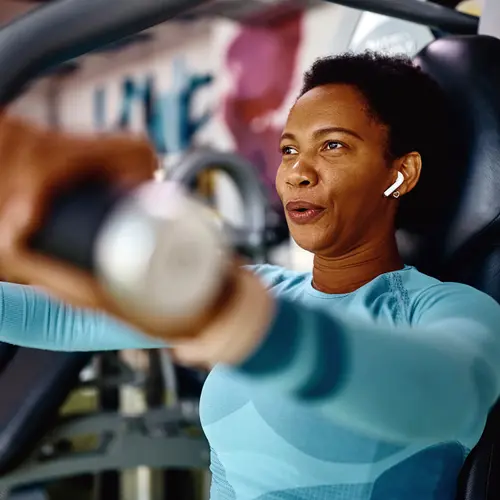Regular exercise plays a role in helping you maintain your overall physical and mental health. For many, working out involves lifting weights or using other gym equipment. While you can use weights and machines, those items aren’t a requirement. You can work out using only your body weight. Even without dumbells and other equipment, you can get in shape and improve your health.
The Benefits of a No-Equipment Workout
There are several benefits of doing a no-equipment workout:
It’s convenient and affordable. You can work out anywhere, whether you’re at home, traveling, or at work. You don’t need any equipment, nor do you need a gym membership. The average monthly gym membership in the United States is $58. That’s $696 a year, not including annual membership fees and other costs.
It’s great for everyone, regardless of fitness level. One reason why people don’t go to the gym is that they’re self-conscious about the way that they look. They might be new to weight lifting or unsure of how to build a workout plan. Anyone at any fitness level can do a no-equipment workout. It’s great for beginners. Plus, those with more experience can easily adjust their routine to be more challenging.
It builds muscle and burns fat. When using proper technique, bodyweight exercises can help you burn fat and build muscle at the same time.
5 No-Equipment Whole Body Workout Exercises
Here are several no-equipment whole body exercises you can do no matter where you are:
Push-ups. Push-ups work the muscles throughout your entire body, including your arms, chest, abdomen, and legs, making them a great exercise. To start:
- Get into a plank position.
- Place your hands on the ground shoulder-width apart and extend your feet back behind you. Be sure to pull your abs in, too.
- Lower yourself toward the ground, bending your elbows outward until you reach a 90-degree angle.
- Push yourself back up to the starting position.
- Repeat 15 times.
If you’re a beginner, start on your hands and knees first. For more of a challenge, rest your feet on a bench or sofa behind you and do decline push-ups.
Planks. Planks use several muscle groups, including some of the largest ones in your body. It works your back, shoulders, abs, glutes, and more. To do planks:
- Place your hands on the ground shoulder-width apart and extend your legs out behind you.
- Tighten your abs and keep your back straight.
- Hold it for 30 to 60 seconds, or as long as you can.
If you’re a beginner, you can start out doing planks on your elbows. If you’re looking for more of a challenge, lift one of your legs off the ground behind you and put it back down. Repeat for ten reps and then switch legs.
Bodyweight squats. Squats are great for strengthening and toning the muscles in your lower body. As part of a vigorous exercise routine, they can help to burn a lot of calories, too. To begin:
- Stand with your feet shoulder-width apart.
- Keeping your back straight and pulling your navel inward toward your spine, bend at the knees while reaching your buttocks back as though you are going to sit in a chair.
- Make sure that your knees don’t extend forward past your ankles.
- Press down through your heels and stand back up again, squeezing your glutes at the top.
- Repeat ten times.
For beginners, you can start by going halfway down before standing up straight again. For an advanced modification, squat down and then jump to come up (also known as a jump squat), landing with your knees slightly bent.
Burpees. Burpees work your entire body and can provide a cardiovascular workout, too. They’re a more intense movement that can also help burn calories. To do a burpee:
- Start in the plank position.
- Engaging your core, do one push-up.
- After pushing yourself back up, quickly tuck your feet under your chest and then jump straight up.
- Come back down into the plank position and repeat the movements.
To make it easier, you can skip the push-up part or do the push-up on your knees. For a challenge, position yourself facing a sturdy box or bench. When you jump up, jump onto the box or bench and then back down.
Mountain climbers. Mountain climbers involve several muscle groups, including your core, shoulders, arms, and legs. To begin:
- Start in a plank position, keeping your back straight and tightening your core.
- Drive one knee forward under your chest and touch your toes to the ground.
- As you move that leg back, drive your other knee up.
- That’s one rep.
- You can slow the movements down to make it easier and gradually increase your speed as you become more comfortable and improve your stability.
- Do as many repetitions as you can in 60 seconds.


